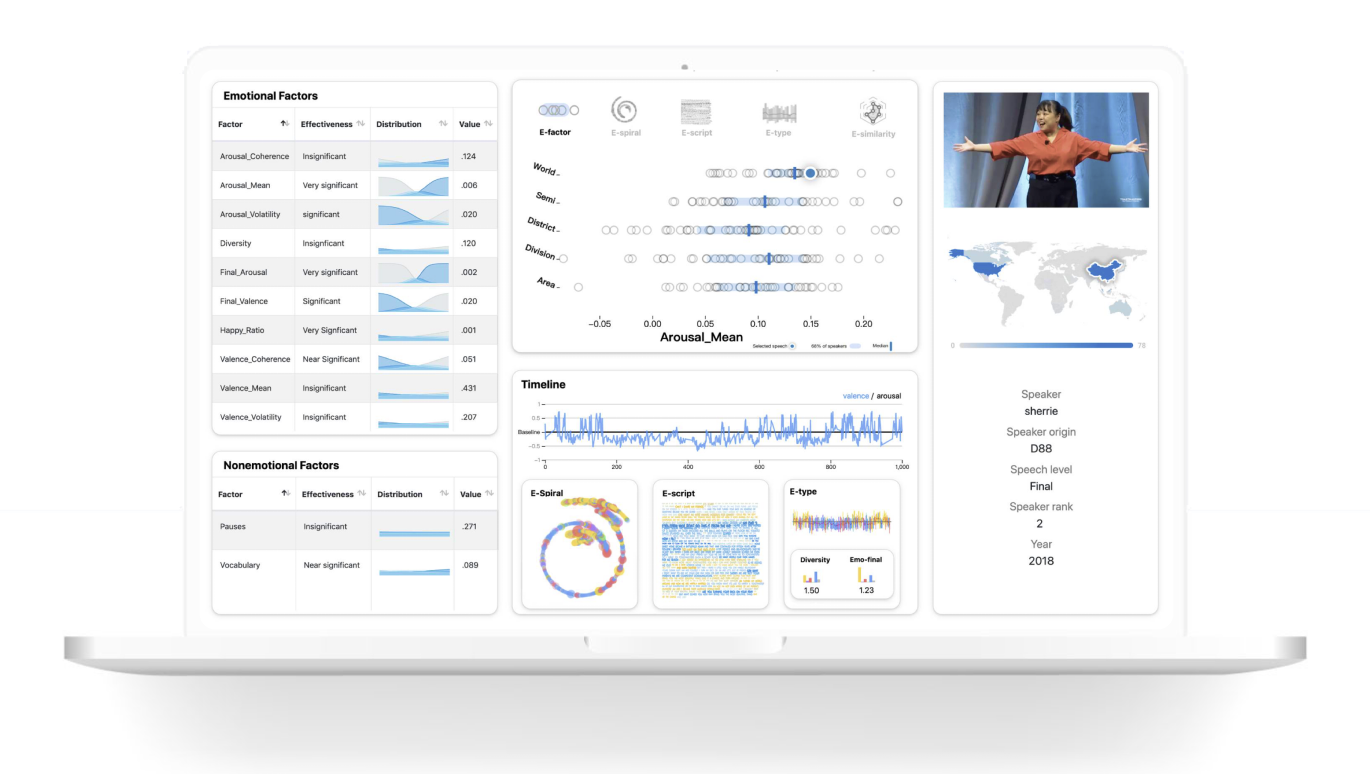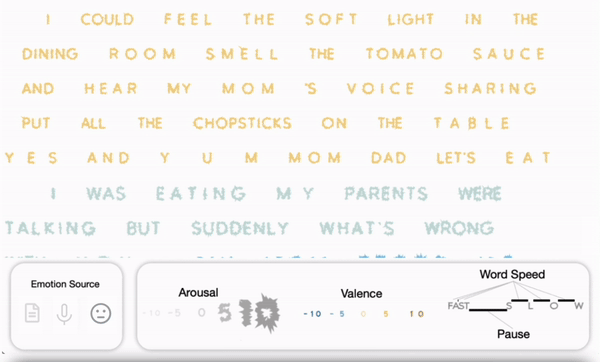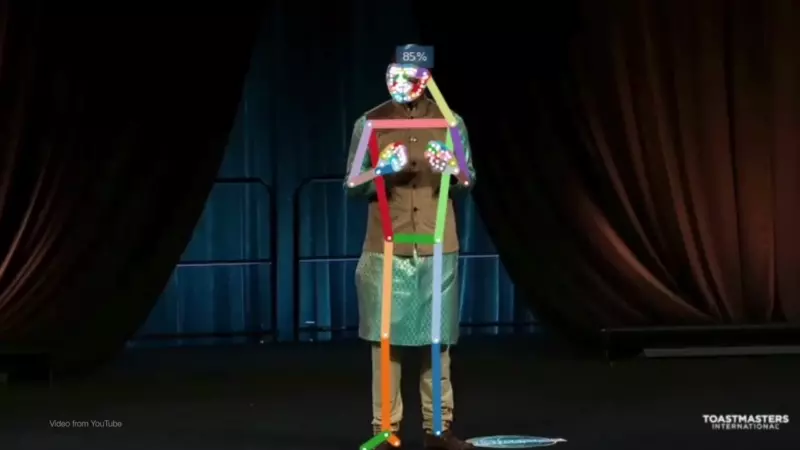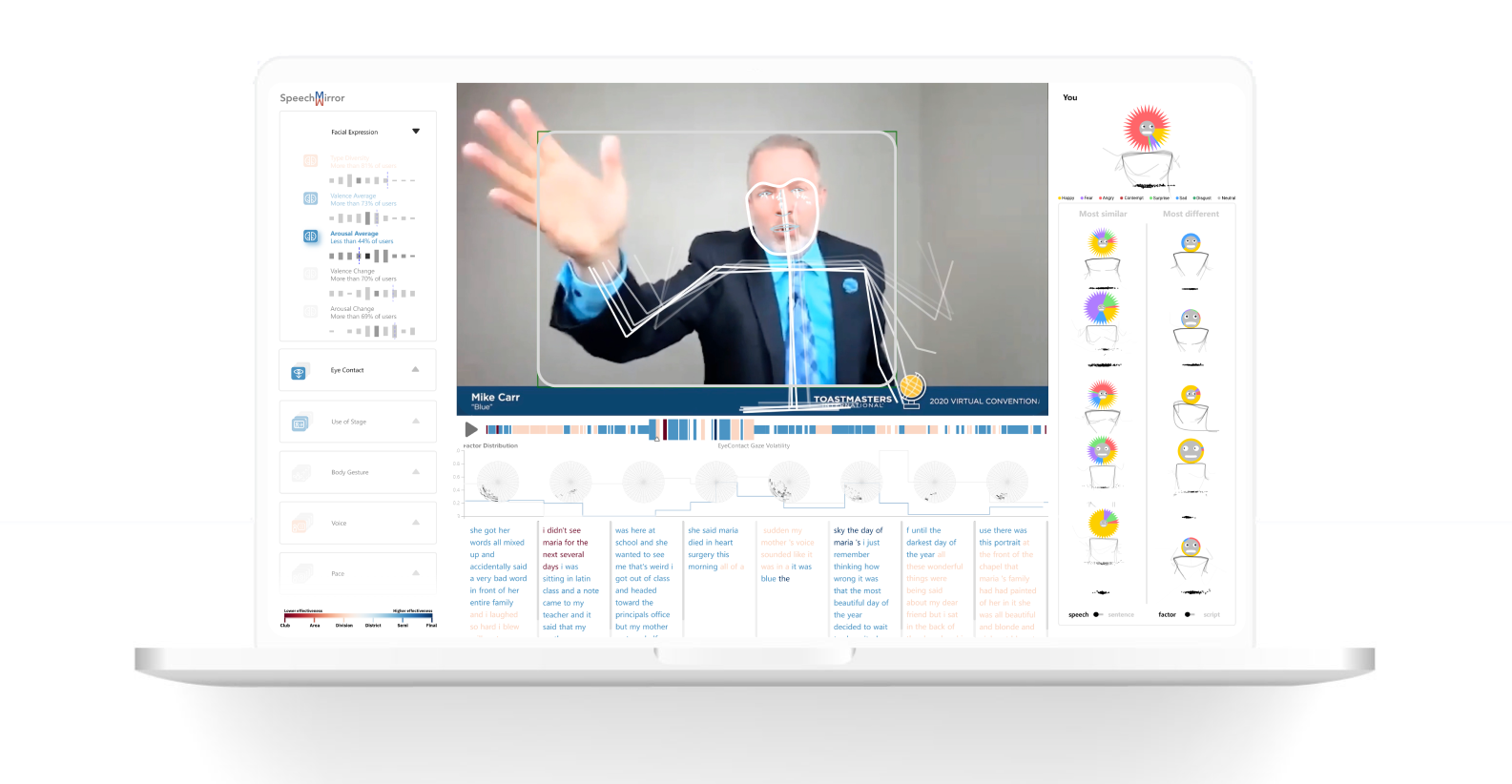在项目开始时,小规模分析显示了演讲者的情感与比赛排名之间的模式,这激发了进一步的研究。
Infodesign Studio的创始人开始收集比赛演讲,想知道大规模分析是否能带来见解。这些演讲通过情感计算方法进行了处理。
第一个系统允许演讲者测试哪些因素影响演讲效果。Infodesign Studio致力于创建分析指标、制定系统需求、可视化和系统设计。
我们研究的演讲中,情感转折是显著的因素,因此我们开发了e-spiral,以便比较这些变化。
当我们发现因素之间存在显著关系时, 我们想知道如何最好地支持演讲者自己发现模式。如何以一种人们能够轻松识别的方式展示数据?

演讲的成功存在于哪些模式? 演讲节奏、词汇和各种情感指标等因素如何影响不同国籍的表现?

E-script直接通过排版显示情感、语速、停顿和节奏。
在我们研究的下一个阶段,我们不仅测试了理论,而且还帮助了演讲者了解他们的演讲与其他参赛者的不同之处

对于在线演讲,情感、手势、眼神接触、舞台移动和其他因素方面,最相似和最不同的演讲是什么样的? 我们能从具有不同表达模式的演讲者中学习吗?

随着技术的进步和更精确的演讲信息量化方法的开发,提供见解的新方式可以改进演讲者在销售目标、娱乐目的和说服意图方面的许多目标。
Infodesign Studio的创始人开始收集比赛演讲,想知道大规模分析是否能带来见解。这些演讲通过情感计算方法进行了处理。
在项目开始时,小规模分析显示了演讲者的情感与比赛排名之间的模式,这激发了进一步的研究。
第一个系统允许演讲者测试哪些因素影响演讲效果。 Infodesign Studio致力于创建分析指标、制定系统需求、可视化和系统设计。
当我们发现因素之间存在显著关系时, 我们想知道如何最好地支持演讲者自己发现模式。如何以一种人们能够轻松识别的方式展示数据?
我们研究的演讲中,情感转折是显著的因素,因此我们开发了e-spiral,以便比较这些变化。
E-script直接通过排版显示情感、语速、停顿和节奏。
演讲的成功存在于哪些模式? 演讲节奏、词汇和各种情感指标等因素如何影响不同国籍的表现?

在我们研究的下一个阶段,我们不仅测试了理论,而且还帮助了演讲者了解他们的演讲与其他参赛者的不同之处

对于在线演讲,情感、手势、眼神接触、舞台移动和其他因素方面,最相似和最不同的演讲是什么样的?我们能从具有不同表达模式的演讲者中学习吗?

随着技术的进步和更精确的演讲信息量化方法的开发,提供见解的新方式可以改进演讲者在销售目标、娱乐目的和说服意图方面的许多目标。
